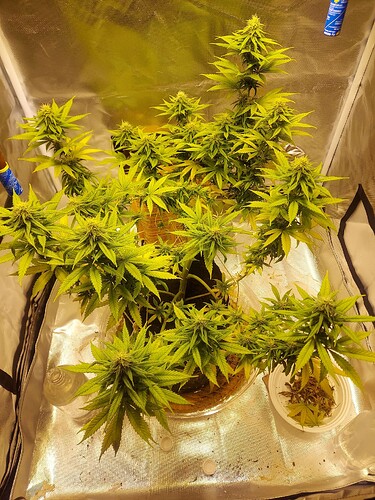I never mentioned silica once in my post. I understand silica and its importance. I add green sand and softwood ash. Green sand is slow release; and softwood ash is immediately available. Softwood ash is 60-65% silica by volume. I studied organic chemistry as an undergrad and look at the whole world as a chemistry problem.
After re reading the thread, I guess I should elaborate on my statement. I am not missing the point, I do feel amino acids are important. They are the buildings blocks of proteins and used in metabolic pathways of plants like we both mentioned. If you build your soil first amino acids should all ready be abundant. What I don’t like is how much a small bottle of “aminos” cost in a bottle when they are so easy to add naturally.
Every time one cooks rice or pasta the cook water is loaded with amino acids and should be added to the garden. Eggs are freaking loaded with amino acids and so is milk. Both can be warmed and mixed with water and then added to the garden. Eggs contain 18 of the 20 human building amino acids. Milk contains all 20 base human amino acids. Yogurt contains 19 of the 20 base human amino acids plus lactobacillus and streptococus bacteria in abundance.
Meat. Amino acids are 15-20% of the volume of meat protein. If you have spoiled meat, trims like gristle or fatty ends, meaty bones or a whole roasted bird like a turkey or a chicken. Compost it. Don’t throw it away. It breaks down into amino acids and eventually nitrogen. I like to anaerobically ferment it in 5 gallon lidded buckets until it’s a goo. I often mix it with weeds like dandilions and blackberry canes. If I flood it with water or urine it breaks down in about a month.
Amino acids once out of the bottle are not long term stable. They either colvalent bond (fold) to other aminos making proteins, or else they break down into nitrogen when it hits the soil biome. It only stays an amino acid inside the cells of the plant or organism.
I am not against the use of amino acids, I just feel it’s so easy to have it in the substrate with waste products of everyday cooking and eating, that I do not see the need to add it in a bottle or from a bag.
I am not doubting or contesting that  . Yet a couple drops of soy sauce or the pasta cook water contains all the glutamic acid one would need. Wheat pasta is 30-35% glutamic acid due to the gluten proteins present in the wheat of pasta. Don’t toss that cooking water. Or better yet compost those bread heals that no body likes. Those are also 30% glutamic acid.
. Yet a couple drops of soy sauce or the pasta cook water contains all the glutamic acid one would need. Wheat pasta is 30-35% glutamic acid due to the gluten proteins present in the wheat of pasta. Don’t toss that cooking water. Or better yet compost those bread heals that no body likes. Those are also 30% glutamic acid.
No need to supplement any amino acids from the bottle. Just don’t throw it down the drain or garbage and you are golden.
I am a composting, char loving, organic gardener and I find most things in a bottle are easily available without having to buy it seperate. That’s the point that I did not express well the first time, and the assumed thesis in my head. I think we are going to the same place; just from different directions. Happy growing my friend @LateNightGardner.


